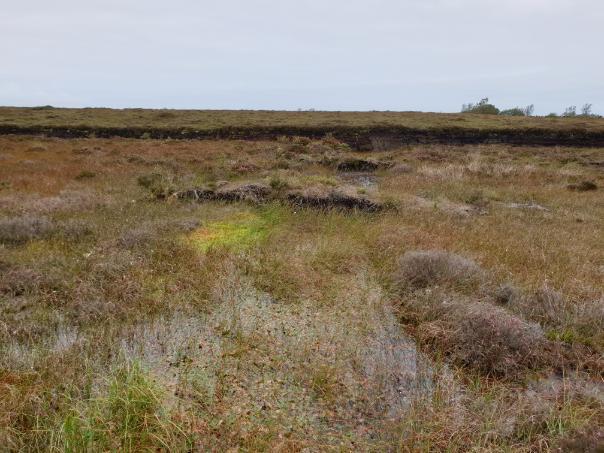“No bog standard” when it comes to Irish peatlands
Earth Institute member Dr. Florence Renou-Wilson recently co-authored the EPA Research Report 'Peatland Properties Influencing Greenhouse Gas Emissions and Removal'.
Dr. Renou Wilson explains that there is “no bog standard” when it comes to Irish peatlands,
Peatlands are the main subclass of wetlands in Ireland covering 1/5 of the territory. Much of this area has been extensively modified by humans and currently more than 40% of the peatland area does not have the original hydrophytic vegetation, which has been replaced by forest, grass or removed altogether through peat extraction for energy, horticulture and domestic purposes. Sustainable use and maintenance of peatlands are of priority importance for reducing greenhouse gas (GHG) emissions and for climate change mitigation.
Investigating the depth and carbon and nutrient contents of our peatlands has been critical in refining our estimate of how much carbon is stored in raised and blanket bogs and how land use and management affect GHG emissions.

Dr. Renou Wilson highlights the key findings,
Well to start with our champion: One hectare of Irish raised bog in near natural condition store 3000 tonnes of carbon (that’s 10 times more carbon than the equivalent area of rain forest ecosystem!).
However, our results confirm that using our bogs intensively over the last century has led to high subsidence and has resulted in the loss of peat and the carbon that the bogs had sequestered and stored over thousands of years.
Using the areal extent of all land use categories reported in the EPA National Inventory Report and the latest NPWS datasets, we estimate that the carbon stock held in near natural and managed peatlands in Ireland to be 2216 million tonnes (or 2.22 billion tonnes) of carbon. You will find the break down by peatland types and by land use categories in our report but of importance is that we found that near natural bogs (those that are protected at the moment) plus cutover bogs (i.e. those only affected by past peat cutting on the edges) contain half of that total carbon amount. Hence, the importance of managing and keeping these bogs wet to keep the carbon within locked up.
Despite a shallower peat depth, cutover bogs hold the largest soil organic carbon stock after natural peatlands regardless of peatland type. These results demonstrate the importance of not only the network of protected natural bogs but also the cutover bogs that are affected by marginal peat cutting.
Drained cutover bogs are forever stuck in ‘autumn’, decomposing the organic matter and releasing the carbon back to the atmosphere.

Commenting on the importance of the Earth Institute as a hub for inter-disciplinary researchers Dr. Renou Wilson said,
When it comes to researching peatlands, one has to stand at the cross-roads between disciplines because they are impacted by so many uses: energy, agriculture, forestry, infrastructure but also they affect in turn so many people, from the arts (photography, literature), for recreational activities and most importantly for the local communities that live around the peatlands and with whom scientists must communicate to inform each other since they are at the heart of the sustainability of these ecosystems.
The EI Thursday Coffee mornings were excellent to help with this inter disciplinary work and reach out and catch up with colleagues who are also interested in peatlands from different angles.
You can read the full report here.


